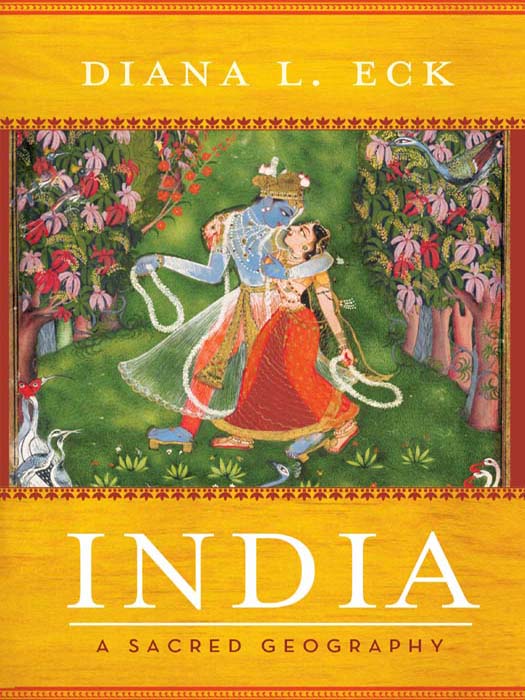
India
A Sacred Geography
کتاب های مرتبط
- اطلاعات
- نقد و بررسی
- دیدگاه کاربران
نقد و بررسی

Starred review from January 9, 2012
At a time of religious intolerance and extremism, Harvard comparative religion and Indian studies professor Eck (Encountering God: A Spiritual Journey from Bozeman to Banaras) offers an important corrective to the idea that Hindu religious and cultural distinction depend on, or correlate to, uniqueness and exclusivity. This rich study of “the pilgrim’s India” emphasizes the repetition of meaning as well as the “complexity, mobility, and plurality” attendant on the country’s vast network of pilgrimage sites, which form an intricately “imagined landscape” linking the physical topography with cherished stories of gods and heroes—a “practical everyday pluralism.” Similar to (but distinct from) Benedict Anderson’s formulation of nationalism as the “imagined community,” the imagined landscape is far from fanciful. No Google Earth search can capture the embedded meaning of this geography, explains Eck, who persuasively describes a lived social landscape centuries old, yet very much alive—with literally millions of pilgrims on the roads today. Cogent and erudite, this carefully crafted investigation is replete with accounts of myths modern and ancient, and offers an extensive glossary of key terms. An important addition to the study of religion, comparative cultures, and politics, the book should also serve intellectually adventurous readers as a “thick descriptive” travel guide, while offering a reflection on the social and cultural construction of our own landscapes. Agent: Jill Kneerim, the Kneerim & Williams Agency.

January 15, 2012
A far-reaching exploration of the spiritual geography and sacred spaces of India. With its hundreds of disparate peoples connected by a shared conception of place, India is, in the words of statesman Jawaharlal Nehru, "an ancient palimpsest on which layer upon layer of thought and reverie [has] been inscribed, and yet no succeeding layer [has] completely hidden or erased what [has] been written previously." The country is densely layered with places, events, markers and deities from the Mahabharata, the Rig Veda and other foundational Indian texts. Each of these sites, in turn, is connected to the others in a vast, complex network stretching the length and breadth of the land, from the Himalayas to the Indian Ocean. It is this mythical or spiritual geography that gives Hinduism its power and meaning and shapes how other faiths, from Sikhism to Christianity and Islam, are practiced there. Eck (Comparative Religion and Indian Studies/Harvard Univ., A New Religious America, 2001, etc.) explores the numerous holy rivers and pilgrimage paths of India, seeking out temples and shrines marking a particular place's significance within the span of Indian cosmology. Explaining how the various gods in the Hindu pantheon are associated with certain regions and features of the landscape, Eck connects the Hindu legends to the physical geography of the country. In this way, every village, creek, ridge or copse of trees represents an identifiable moment, object or event in the Hindu scriptures. Pilgrims bring these associations to life by traveling the land on hundreds of set paths--e.g., from the head to the heart to the navel to the feet of Krishna--helping to develop, as they go, a united sense of Indian identity that transcends linguistic or cultural affiliations. At times a bit dense for the casual reader, but Eck's perseverance illuminates one of the world's most mysterious and multifaceted countries.
COPYRIGHT(2012) Kirkus Reviews, ALL RIGHTS RESERVED.

























دیدگاه کاربران